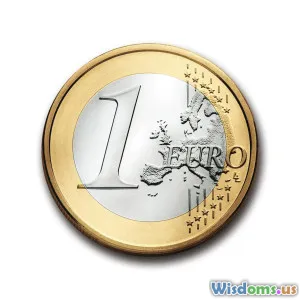
Can Patreon Replace Traditional Ad Revenue for Small Creators
10 min read Exploring whether Patreon can serve as a sustainable alternative to traditional ad revenue for small creators, backed by examples, data, and expert perspectives. (0 Reviews)
Can Patreon Replace Traditional Ad Revenue for Small Creators?
Introduction
The digital landscape for content creators is evolving at lightning speed. For years, traditional advertising revenue—think YouTube ads, banner ads, and sponsored posts—has been the bread and butter of many small creators making a living online. However, with the volatility of ad platforms, fluctuating ad rates, and the dominance of algorithms controlling who sees what content, many creators find themselves vulnerable and seeking stability.
Enter Patreon, a membership platform that allows fans to support creators directly through monthly subscriptions. But the big question remains: can Patreon replace traditional ad revenue, especially for small creators who depend heavily on ad income? This article will explore the viability of Patreon as a sustainable income source, analyze opportunities and challenges for creators, provide real-world examples, and offer insights that may redefine how creators monetize their passion.
Understanding the Traditional Ad Revenue Model
How Traditional Ad Revenue Works for Small Creators
Platforms like YouTube, Twitch, and blogs usually rely on advertising models where creators earn money based on clicks, views, or impressions. For YouTube creators, the revenue depends largely on factors such as CPM (cost per mille, or how much an advertiser pays per 1,000 views), watch time, and niche demand. The significant advantage here is accessibility—any creator with content and platform access can start monetizing.
The Challenges of Ad Revenue Stability
While the ad revenue model is accessible, it’s inherently unstable for several reasons:
- Algorithm changes: Platforms regularly update algorithms that can decrease discoverability and viewership overnight.
- Advertiser demand fluctuations: If advertisers pull back budgets or change target demographics, CPM rates can drop drastically.
- Demonetization and policy changes: Creators risk losing ad revenue due to shifting content policies and community guidelines.
- Revenue share: Platforms take a cut of the ad revenue, limiting what goes directly to creators.
For example, YouTube creators saw a significant drop during the "Adpocalypse" in 2017, when many advertisers withdrew their budgets temporarily due to brand safety concerns.
Impact on Small Creators
Small creators, particularly those with subscriber counts under 50,000, often suffer more due to less reach and fewer views. Lower CPMs for niche or less advertiser-friendly content exacerbates waning income. According to a 2022 report from Social Blade, over 70% of creators under this threshold earn less than $200 per month from ads, making traditional ad revenue insufficient for a sustainable income.
Patreon: A New Paradigm for Creator Income
What is Patreon?
Patreon is a platform where fans, called patrons, pay creators a recurring fee—usually monthly—in exchange for exclusive content, early access, merchandising, or community engagement. Instead of ads, the creator’s audience directly funds their content.
Direct Fan Support Advantages
- Predictable income: Subscription-based revenue fosters steady monthly income.
- Creative freedom: Without depending on advertisers’ approval, creators can pursue authentic content.
- Closer community: Strengthened creator-patron relationships help build loyal, engaged communities.
How Patreon Works for Small Creators
Small creators can establish multiple membership tiers, offering tiered benefits to encourage different patron levels. Some creators use Patreon to supplement ad revenue, while others diversify into merchandise or exclusive experiences.
Real-World Examples
- Amanda Palmer, Musician: Though not a small creator by scale, her transition to Patreon after years in traditional music revenue showed direct fan funding can exceed ad and sales income.
- Kurzgesagt, Educational YouTube Channel: This channel reportedly earns approximately $50,000 monthly on Patreon, providing income diversification that softens the blow of YouTube ad volatility.
- Independent artists and podcasters: They often rely heavily on Patreon, as ads yield minimal returns for niche or artistic content.
A survey by Patreon (2023) showed 62% of small creators using the platform said it gave them income stability unachievable solely with ads.
Comparing Patreon to Traditional Ad Revenue
Financial Stability
Patreon offers a steadier cash flow with predictable monthly income from subscriptions, unlike variable ad revenue. However, it requires an engaged base willing to pay, which is not guaranteed without drastic outreach or excellent content.
Audience Engagement
Creators on Patreon often foster deeper relationships, with patrons feeling like co-creators or contributors. This emotional connection contributes to longer-term support compared to passive ad consumption.
Monetization Scale and Limits
Traditional ad revenue benefits from viral reach; more eyeballs mean exponentially more income. Patreon’s income is limited by how many fans are willing to pledge, often 1-5% of the audience—industry sources term this as the "patron conversion rate."
Platform Fees and Constraints
Patreon charges 5% to 12% fees depending on the plan, plus payment processing fees. While this is competitive, it still reduces net income. In contrast, platforms may take 30-45% from ad revenue.
Platforms like YouTube also act as discovery engines; Patreon primarily supports creators who already have an audience.
Challenges Artists Face with Patreon
Building a Paying Audience
Many small creators struggle to convince casual fans to become patrons. Content consumers often expect free content and may hesitate to subscribe.
Consistency and Content Demands
Patreon often requires exclusive, regular content rewards to justify patron pledges, placing additional workload and creative pressure on the creator.
Managing Patron Relationships
Unlike ads which are passive income, Patreon demands active communication, community management, and sometimes resolving patron inquiries or issues.
Income Variability and Risk
Although more predictable, Patreon income can quickly decrease if patrons cancel subscriptions, especially following content gaps or controversies.
Can Small Creators Rely on Patreon Alone?
The Verdict
For many small creators, Patreon can’t fully replace ad revenue immediately but acts as an essential complement and transition tool. The most successful creators utilize a mix: ads for reach and scaling, Patreon for engaged income, and merchandise or sponsorships for diversification.
Practical Strategy
- Build a follower base via free channels. Growing subscribers/viewers/reads is key.
- Offer attractive Patreon tiers with clear value propositions. Consider exclusive content, early access, or behind-the-scenes.
- Maintain consistent content output both publicly and for patrons.
- Experiment with bundling: combining Patreon with small, targeted ad revenue.
Creators like Ali Abdaal, who integrate YouTube ads with Patreon tiers and courses, illustrate sustainable multi-revenue approaches.
Case Study:『Jon Cozart』
YouTube content creator Jon Cozart has a modest subscriber base compared to viral stars but reportedly leverages Patreon for a substantial part of his income alongside ads and sponsorships. His approach demonstrates focusing on hyper-engaged fans rather than pure numbers.
Conclusion
Patreon offers an exciting alternative revenue model for small creators frustrated by the unpredictability of traditional ad revenue. Its ability to foster stable, subscription-based income paired with community engagement presents undeniable benefits. However, Patreon is not a magic bullet that can replace ads entirely for every creator overnight.
The most viable path for small creators involves blending Patreon’s direct fan support with traditional advertising and other income streams. This diversified monetization reduces financial risks and builds stronger, more resilient creative businesses.
Most importantly, embracing direct support platforms like Patreon signals a shift where creator autonomy, audience relationships, and value-driven content supersede ad-based economics. This evolution empowers small creators to find innovative ways to thrive in the ever-changing digital ecosystem.
Additional Resources
By understanding both traditional ad revenue and Patreon’s strengths and limitations, small creators can make informed decisions about sustainable funding models that truly support their craft and community.
Rate the Post
User Reviews
Popular Posts


















